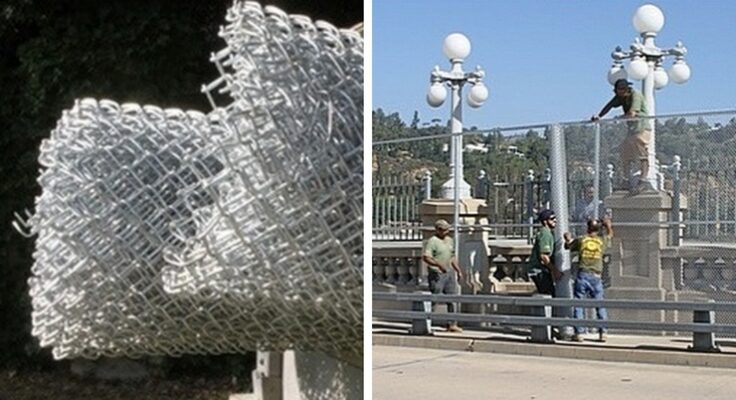On Tuesday, NASA administrator Charles Bolden visited JPL to see the Earth missions planned for 2014.
Last year was the year of Mars, but for NASA, 2014 will be the year of Earth science.
Bolden and journalists suited up in long smocks, booties, hairnets and gloves and took an “air shower†before entering the clean room holding various satellite parts.
Bolden looked at the SMAP (Soil Moisture Active Passive) mission and the International Space Station (ISS) RapidScat instrument, both of which will be launched in 2014.
“We have QuikScat, we have RapidScat, next we’ll have InstantScat,†joked John Wirth, the integration and test lead for the ISS-RapidScat.
The ISS-RapidScat will be used to track climate processes and support weather and marine forecasting, including the tracking of storms and hurricanes.
After its launch in April 2014, the ISS-RapidScat will be attached by a robotic arm to the Columbus module of the international space station.
About half of ISS-RapidScat is comprised of “heritage†hardware, which is hardware that was originally designed and built for a previous mission. The oldest heritage hardware was manufactured in the late 1990s.
“It’s a trailblazing mission at JPL,†said Julia Stalder, of the mechanical engineering team for ISS-RapidScat. “We’re getting the same science return with much less cost.â€
Because of their use of heritage hardware, JPL will complete RapidScat in one and a half years instead of three. JPL also estimates that the total cost of ISS-RapidScat is about 5% of what it would cost to complete the mission with all new parts.
Dragana Perkovic-Martin, a radar performance engineer, said that JPL had to build some new pieces in order to fit the heritage parts to the space station, not unlike the square-plug-and-circular-hole dilemma from Apollo 13.
“A lot of our structure is new,†Stalder said. “A lot of the subsystems and components are heritage.â€
“Because we attach electrically and mechanically, we effect the whole station,†Perkovic-Martin said of RapidScat. “We have to make sure we’re not going to hurt the space station or the people there.â€
Perkovic-Martin and Stalder said that this was rare for JPL.
“JPL usually works with robotics,†Stalder said.
The SMAP satellite will be used to map Earth’s land-surface soil moisture to better understand our water, carbon, and energy cycles and to help predict floods, droughts and other forecasts. The data that SMAP gathers will also help scientists understand more about water availability, food production, and the impacts of climate change.
When the SMAP satellite reaches space, its solar panels will deploy and thrusters will turn them toward the sun to get the system to full power. The boom will then snap into place and the reflector expands like an umbrella.
The name “Soil Moisture Active Passive†refers to two instruments on board – the radar and radiometer. The radar is called the “active†instrument because it transmits radio waves and echoes and then collects the responses. The radiometer, however, is “passive†because it collects information about microwave emissions, but does not transmit anything.
To learn more about these and other missions, visit http://www.jpl.nasa.gov/.














 0 comments
0 comments


